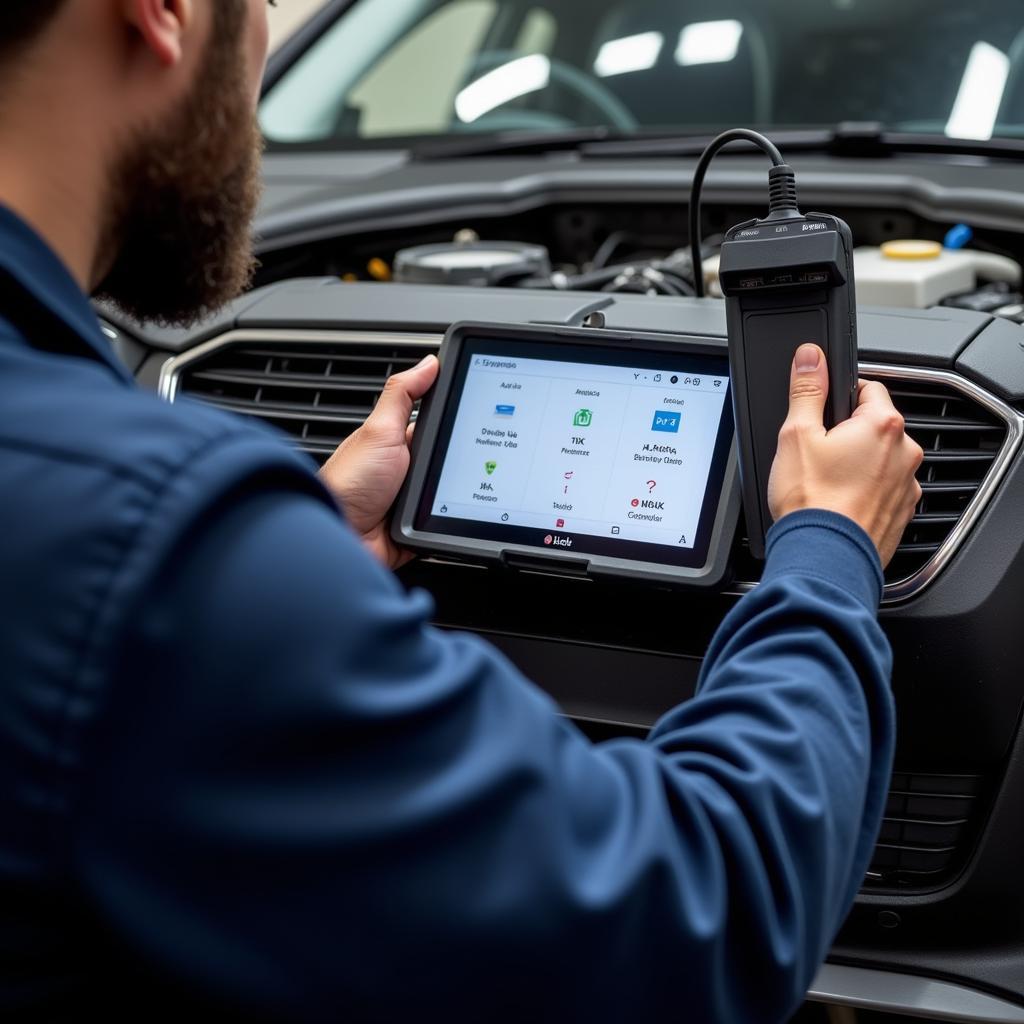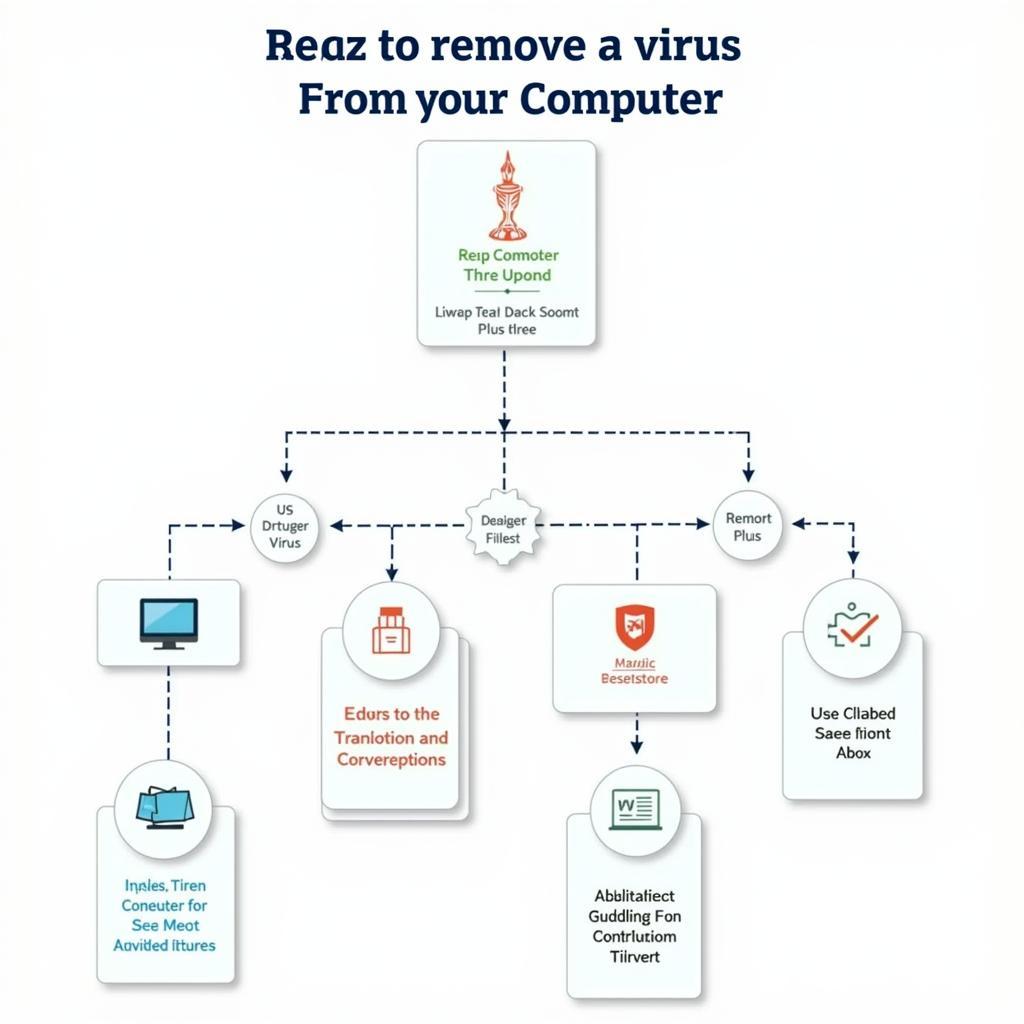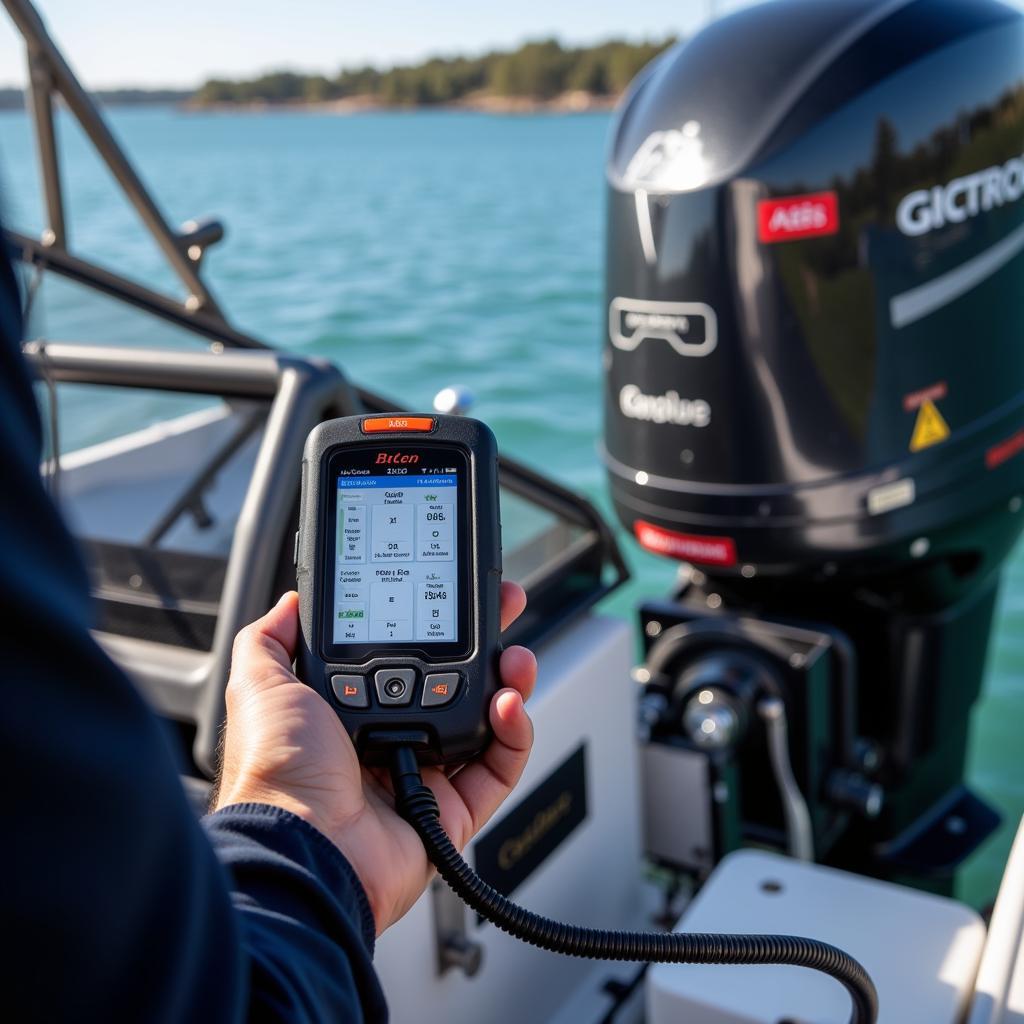Navigating the world of automotive diagnostics can feel like learning a new language, especially when it comes to deciphering Scan Tool Abbreviations. These cryptic acronyms hold the key to understanding your car’s health but can seem daunting to the uninitiated. This comprehensive guide will demystify common scan tool abbreviations, empowering you to take control of your car’s maintenance, whether you’re a DIY enthusiast or a seasoned professional.
Understanding the Importance of Scan Tool Abbreviations
Modern vehicles are complex machines with intricate electronic systems controlled by onboard computers. When a problem arises, the computer stores a Diagnostic Trouble Code (DTC) in its memory, essentially a digital cry for help. This is where scan tools come into play.
Scan tools are electronic devices that act as a bridge between your car’s computer and you, allowing you to read and interpret DTCs. Understanding scan tool abbreviations, which often make up these DTCs, is crucial to pinpoint the root of the problem.
Common Scan Tool Abbreviations and Their Meanings
DTCs typically consist of a letter and four numbers. The letter indicates the system where the fault lies, followed by numbers that specify the particular issue. Here’s a breakdown of common abbreviations:
Powertrain (P Codes)
P codes are the most common and relate to the engine and transmission. Here are some examples:
- P0101: Mass Air Flow (MAF) Circuit Range/Performance Problem
- P0300: Random/Multiple Cylinder Misfire Detected
- P0420: Catalyst System Efficiency Below Threshold (Bank 1)
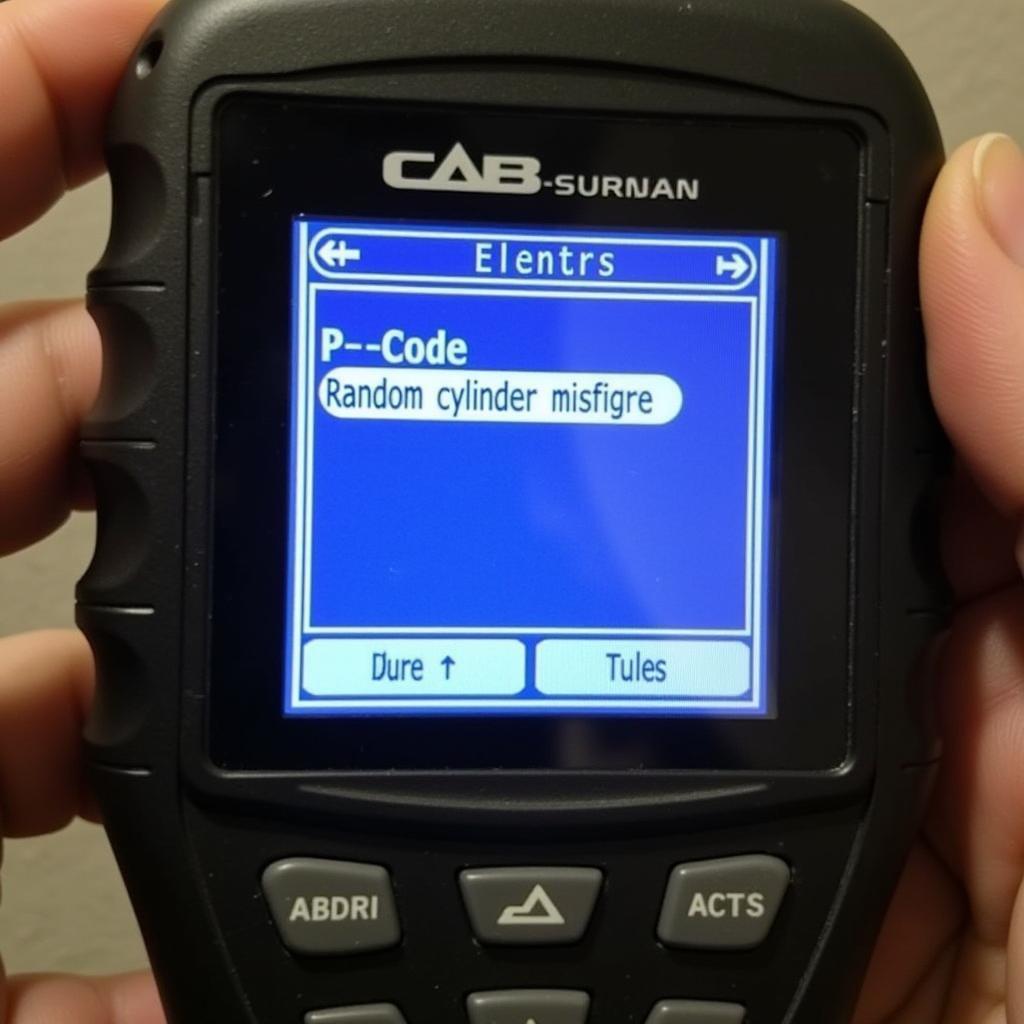 Example of a P-Code
Example of a P-Code
Chassis (C Codes)
C codes pertain to the vehicle’s mechanical components, including the suspension, steering, and braking systems:
- C0200: Vehicle Speed Sensor A Malfunction
- C0445: Evaporative Emission System Purge Control Valve Circuit Open
- C1100: ABS/Traction Control System Power Supply Circuit Malfunction
Body (B Codes)
B codes deal with the vehicle’s body and interior functions, such as power windows, lighting, and airbags:
- B1000: Body Control Module (BCM) Malfunction
- B1318: Driver Airbag Deployment Control Open Circuit
- B1421: Sunroof Motor Circuit Malfunction
Network Communication (U Codes)
U codes indicate a problem with the communication between different modules within the vehicle’s network:
- U0100: Lost Communication with Engine Control Module/Powertrain Control Module (ECM/PCM)
- U0121: Lost Communication with Anti-Lock Brake System (ABS) Control Module
- U0415: Invalid Data Received from Anti-Lock Brake System (ABS) Control Module
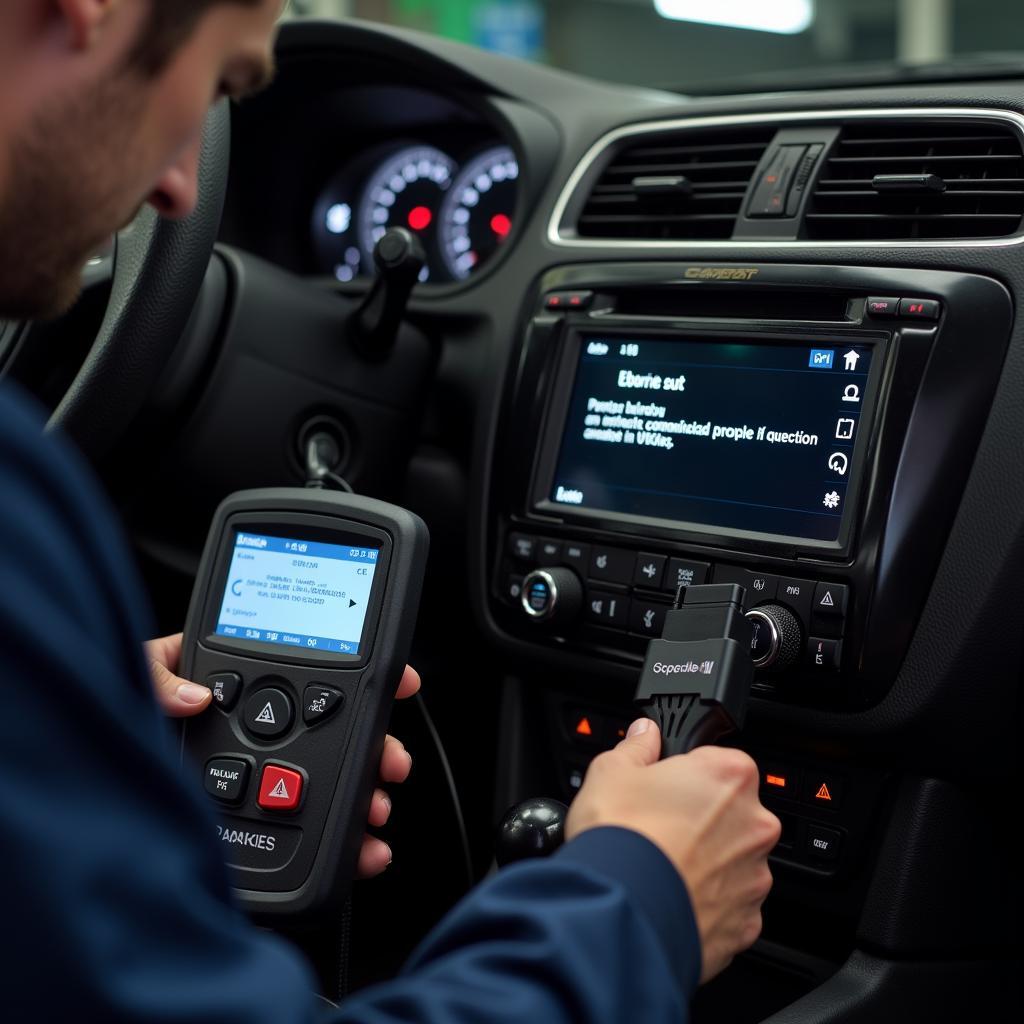 Mechanic Diagnosing a U-Code
Mechanic Diagnosing a U-Code
Using Scan Tool Abbreviations for Effective Diagnostics
While knowing the meaning of individual abbreviations is helpful, effective diagnostics requires understanding the context of the codes and performing further tests. Here’s a step-by-step approach:
- Read the Codes: Connect your scan tool to the vehicle’s OBD-II port and retrieve the DTCs.
- Identify the System: Note the letter prefix of each code to determine the affected system.
- Research the Codes: Use a reliable online database or repair manual to understand the specific meaning of each code.
- Perform Visual Inspections: Check for obvious issues like loose connections, damaged wiring, or worn-out components related to the affected system.
- Conduct Further Testing: Depending on the codes, you may need to perform additional tests using a multimeter or other diagnostic tools.
Beyond the Basics: Advanced Scan Tool Features
Modern scan tools offer much more than just reading codes. They can provide live data streams, perform actuator tests, and even program modules.
- Live Data: View real-time sensor readings like engine RPM, coolant temperature, and oxygen sensor voltage, aiding in dynamic diagnosis.
- Actuator Tests: Command various components like solenoids, relays, and motors to operate, verifying their functionality.
- Module Programming: Update or reprogram certain modules with the latest software versions, potentially resolving complex issues.
Seeking Professional Help: When to Consult an Expert
While DIY diagnostics can be empowering, certain situations call for professional expertise.
- Complex Issues: When multiple codes appear, or the problem persists after basic troubleshooting, it’s best to consult a qualified technician.
- Advanced Programming: Module programming requires specialized knowledge and tools, often best left to trained professionals.
- Safety Concerns: If the issue involves safety-critical systems like airbags or brakes, prioritize safety and seek professional assistance.
“Understanding scan tool abbreviations is like having a secret decoder ring for your car,” says John Smith, Senior Automotive Engineer at ScanToolUS. “It allows you to unlock valuable information and make informed decisions about your car’s maintenance.”
Conclusion
Navigating the world of scan tool abbreviations doesn’t have to be intimidating. By understanding the basics, utilizing online resources, and knowing when to seek professional help, you can become a more informed car owner and keep your vehicle running smoothly.
For all your automotive diagnostic needs, including top-quality scan tools and expert advice, reach out to ScanToolUS at +1 (641) 206-8880 or visit our office at 1615 S Laramie Ave, Cicero, IL 60804, USA. We’re here to help you demystify your car’s language and keep you on the road.

